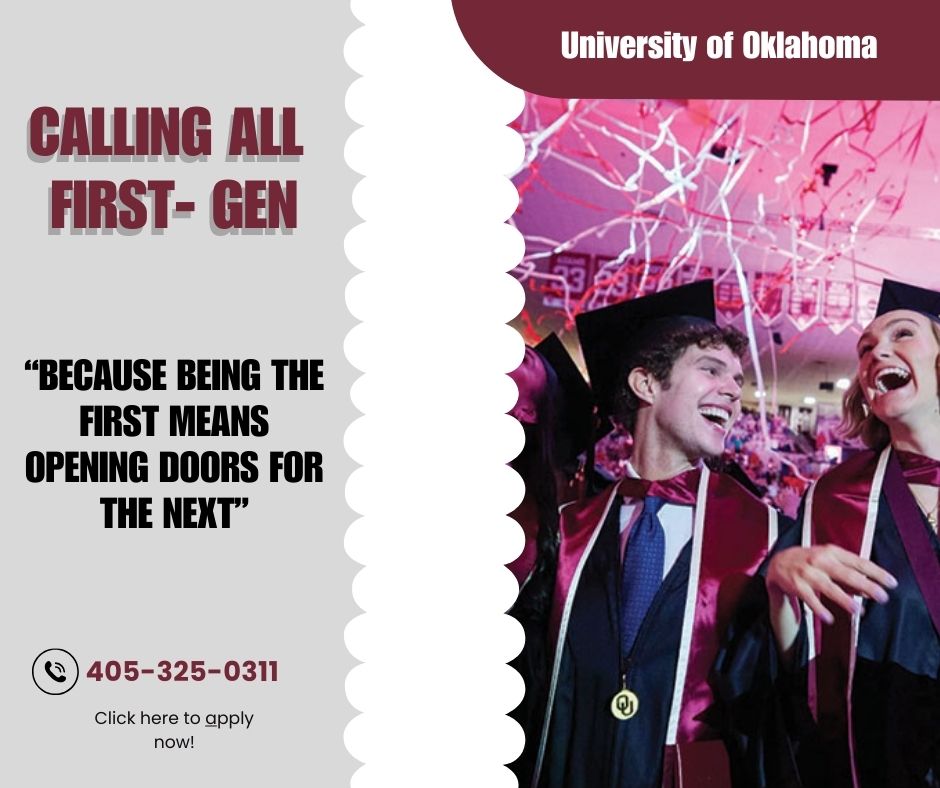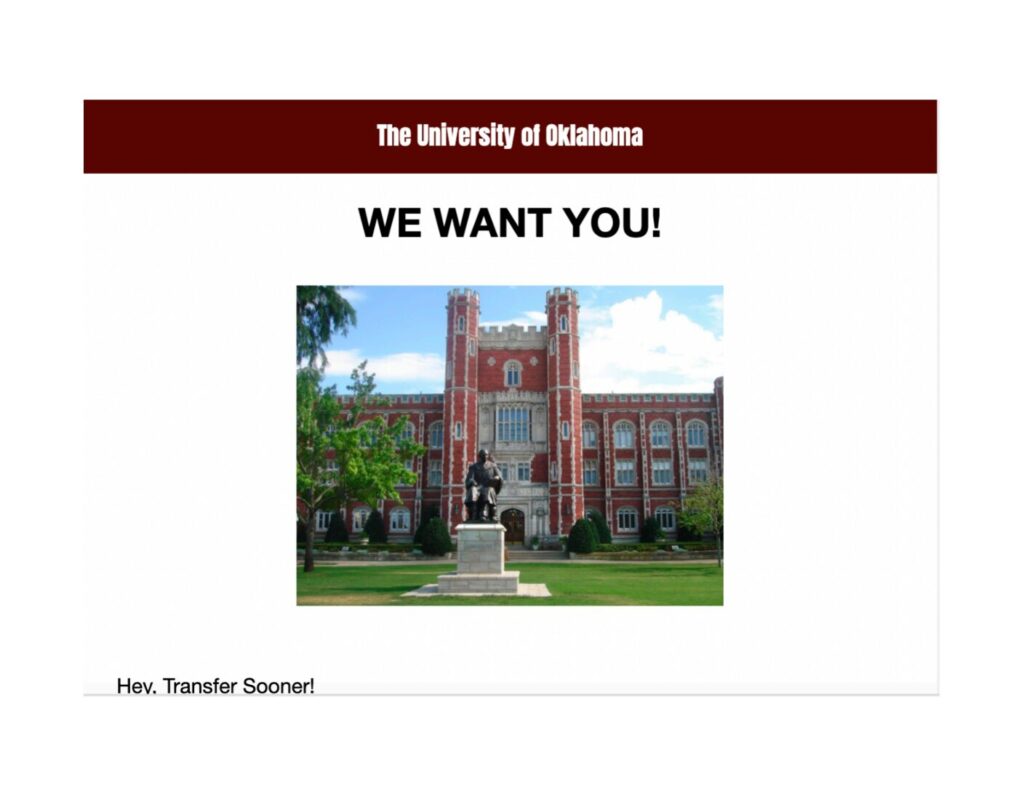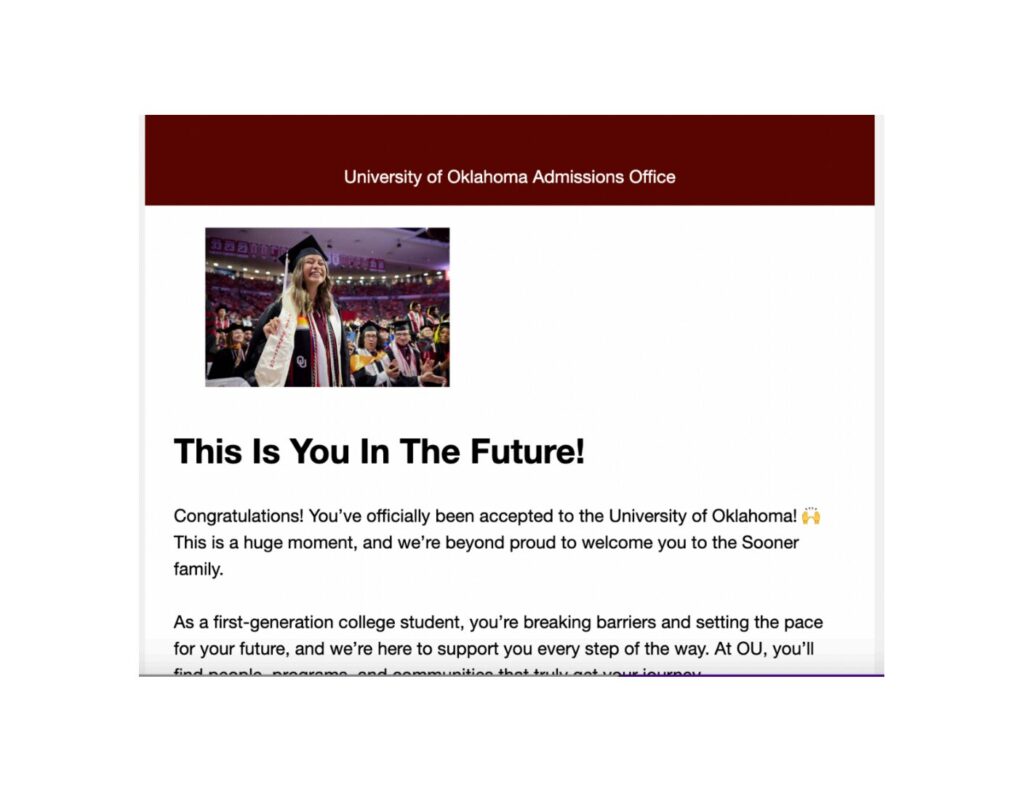When designing digital content, it’s important to consider who you’re talking to. For this project, I focused on two key students in my community: Emma, a 21-year-old transfer student majoring in biology, and Alexis, an 18-year-old first-generation college student. Both have different needs and goals, and that shaped how I designed every piece.
Social Media Post


Social media is fast-paced. You have about one second to grab attention.
For Alexis, I kept the design friendly, bold, and easy to understand. I used strong visuals, short phrases, and a message that felt motivational without being cheesy. Emma needed something more informative, so I included a quick tip or stat she could take with her.
The goal: make them stop scrolling and feel seen.
Email Campaign


Email gave me space to explain more. I organized the layout with short paragraphs, headers, and buttons to make things easy to click through.
Emma’s section focused on academic resources and tips for transfer students. For Alexis, I added a short message of encouragement and a link to student support programs made for first-gen students. I made sure the tone felt supportive and helpful, not overwhelming.
Presentation Template
This was made for advisors or student leaders to share with groups like Emma and Alexis. I designed the slides to be clean and professional but still welcoming.
I included simple graphics and clear space for people to add local resources. The message was all about empowerment—helping students know what’s available and how they can succeed.
What I Learned
Throughout this process, I realized how important it is to know your audience. Feedback helped me simplify my designs and stay focused on what students need.
Tools like Canva and Adobe made designing easier, but it was the personal connection to my audience that made the final work meaningful.
Final Thoughts
Designing for digital means thinking beyond just “looking good.” It’s about making students feel supported, understood, and ready to take action. When we keep our audience in mind, our work becomes more than content, it becomes a connection.
